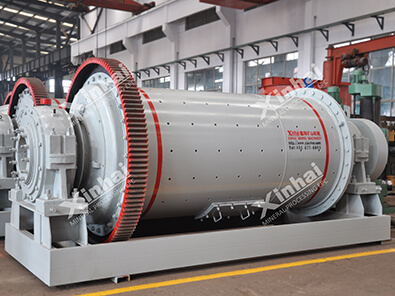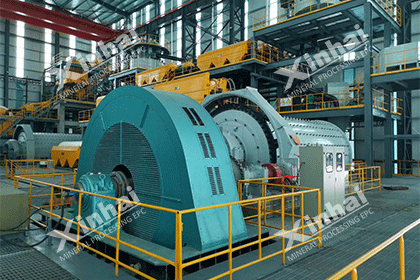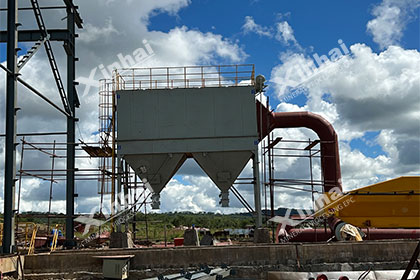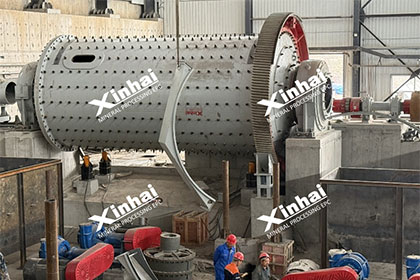Ball Milling in Lithium Ore Processing: A Comprehensive Guide
 Laura
Laura
 May 27, 2023
May 27, 2023
 2811
2811
If you want to know more details about equipment, solutions, etc, please click the button below for free consultation, or leave your requirements!
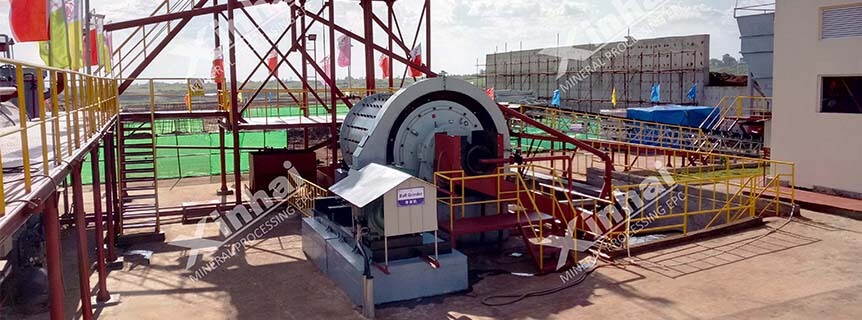
( On-site installation of ball mill in Iran )
Lithium is a highly reactive and flammable metal that is commonly used in batteries, ceramics, and other applications. As demand for lithium continues to grow, efficient processing techniques are becoming increasingly important. Ball milling is one such technique that has proven to be highly effective in lithium ore processing. In this article, we will mainly introduce the lithium ore ball mill. Let’s start!
01Ball Milling Process
Back1. Basic Principles of Ball Milling
Ball milling is a mechanical technique widely used to grind powders into fine particles and blend materials. It involves the use of a ball mill, which is a rotating cylindrical vessel filled with small balls of steel, ceramic, or other materials. The basic principles of ball milling are simple and effective, but they must be carefully considered in order to achieve optimal results.
2. Types of Ball Mills
1). Horizontal Ball Mill
Horizontal ball mills are the most common type of ball mill. They are used in the mining and manufacturing industries to grind materials into fine powders. The horizontal ball mill consists of a rotating drum with a series of balls inside. When the drum rotates, the balls fall onto the material to be ground and crush it into a fine powder.
2). Vertical Ball Mill
Vertical ball mills are similar to horizontal ball mills, but the drum is oriented vertically instead of horizontally. This type of mill is used in the pharmaceutical and chemical industries to grind materials into fine powders. In a vertical ball mill, the grinding media is kept in motion by the rotation of the drum, which causes the material to be ground to be crushed between the grinding media and the drum.
3). Planetary Ball Mill
Planetary ball mills are a type of vertical ball mill that are used in laboratories to grind materials into small particles. They have a unique design that allows them to grind materials in a vacuum or inert gas environment. In a planetary ball mill, the grinding media is attached to the inner walls of the container, which rotates around its axis. The material to be ground is placed in the container along with the grinding media, and the container is rotated at high speeds to grind the material into a fine powder.
4). Industrial Ball Mill
Industrial ball mills are used in the manufacturing industry to grind materials into large particles. They are typically used in the cement and mining industries to grind materials such as limestone, clay, and coal. Industrial ball mills consist of a rotating drum with large balls inside. The material to be ground is fed into the drum, and the balls crush it into a fine powder.
In conclusion, there are several types of ball mills available for use in the mining and manufacturing industries. Each type has its own unique features and advantages, depending on the material being ground and the desired particle size. Understanding the different types of ball mills can help you choose the right machine for your specific needs.
3. Advantages and Disadvantages of Ball Milling
1). Advantages of Ball Milling
A. High Efficiency: Ball milling is a highly efficient method of grinding materials, which can reduce energy consumption by 30%.
B. Uniform Size: Ball milling can produce particles of uniform size, which is important for many applications.
C. Cost-Effective: Ball milling is a cost-effective method of grinding materials, which is much cheaper than other methods.
D. Easy to Operate: Ball milling is a simple and easy method of grinding materials, which requires minimal training and expertise.
2). Disadvantages of Ball Milling
A. Contamination: Ball milling can introduce contaminants into the material being ground, which can affect the properties of the material.
B. Wear and Tear: Ball milling involves the use of heavy machinery, which can cause wear and tear on the equipment.
C. Time-Consuming: Ball milling can be a time-consuming process, which can limit its use in certain applications.
D. Limited Size: Ball milling is limited by the size of the equipment, which can make it difficult to process materials on a large scale.
In conclusion, ball milling is a highly efficient and cost-effective method of grinding materials, which has many advantages. However, it also has some disadvantages, such as contamination and wear and tear on the equipment. Despite these limitations, ball milling is still widely used in various industries, and its benefits continue to be explored and expanded upon.
02Ball Milling in Lithium Ore Processing
Back1. Role of Ball Milling in Lithium Ore Processing
The role of ball milling in lithium ore processing is to break down the lithium-containing minerals and release the lithium ions into the solution. This is achieved through the mechanical grinding of the ore, which helps to increase the surface area of the material, making it easier for the leaching solution to penetrate and dissolve the lithium ions.
Ball milling also plays a crucial role in the purification of lithium ores, as it helps to remove impurities such as iron, sulfur, and other metals that can affect the quality of the final product. This is achieved through the selective grinding of the ore particles, which helps to separate the lithium-containing minerals from the impurities.
In addition to its role in lithium ore processing, ball milling has also been used in the synthesis of lithium-ion batteries. By using ball milling to prepare the electrode materials, researchers have been able to improve the performance and stability of lithium-ion batteries, making them more efficient and durable.
Overall, the role of ball milling in lithium ore processing is crucial to the production of high-quality lithium products. With its ability to improve the efficiency of lithium extraction and purification, as well as its potential in the synthesis of lithium-ion batteries, ball milling is a promising technology that will continue to play a key role in the future of lithium processing.
2. Effect of ball milling on lithium ore properties
Ball milling is a technique that involves the grinding of materials using a rotating drum filled with steel balls. The impact and friction generated by the balls can modify the structure and properties of the materials. In the case of lithium ore, ball milling can improve the crystallinity, particle size distribution, and surface area of the ore.
One of the main benefits of ball milling is the ability to reduce the particle size of the lithium ore. Smaller particles have a larger surface area, which can improve the reaction kinetics and increase the efficiency of the battery. Additionally, ball milling can improve the homogeneity of the ore, which can lead to more consistent battery performance.
Another benefit of ball milling is the ability to modify the crystal structure of the lithium ore. Lithium ore typically consists of layered structures, which can limit the diffusion of lithium ions. Ball milling can disrupt these layers and create defects in the crystal structure, which can enhance the diffusion of lithium ions and improve the battery performance.
In summary, ball milling can significantly improve the properties of lithium ore, including particle size distribution, surface area, and crystal structure. These modifications can lead to improved battery performance and efficiency. However, it is important to note that the optimal ball milling conditions may vary depending on the specific lithium ore and the desired battery performance. Further research is needed to fully understand the effect of ball milling on the properties of lithium ore and its application in battery production.
03Factors Affecting Ball Milling in Lithium Ore Processing
Back1. Lithium Ore Characteristics
Lithium is a rare and valuable element that is essential for many modern technologies, including batteries, ceramics, and glass. It is primarily extracted from lithium-rich minerals, such as spodumene, lepidolite, and petalite. Understanding the characteristics of these minerals is essential for efficient and effective lithium extraction.
1). Spodumene
Spodumene is the most common lithium mineral, accounting for approximately 40% of global lithium production. It is a silicate mineral that typically occurs in granitic pegmatites. Spodumene is usually found in massive form, but it can also occur as prismatic crystals. The mineral is often associated with other lithium-bearing minerals, such as lepidolite and amblygonite.
2). Lepidolite
Lepidolite is a lithium-rich mica mineral that is often found in association with spodumene. It typically occurs in granitic pegmatites and can be found in massive form or as small, platy crystals. Lepidolite is distinctive for its pink to purple color, caused by the presence of manganese. It is also a source of rubidium and cesium, which are valuable in specialized applications.
3). Petalite
Petalite is a lithium aluminum silicate mineral that is often found in granitic pegmatites. It occurs in massive form or as small, prismatic crystals. Petalite is typically white to gray in color and has a hardness of 6 to 6.5 on the Mohs scale. It is often associated with other lithium-bearing minerals, such as spodumene and lepidolite.
The characteristics of these lithium minerals are important for efficient and effective extraction of lithium. Spodumene is typically processed using a combination of crushing, grinding, and froth flotation to produce a concentrate that is then roasted and leached to produce lithium carbonate. Lepidolite is typically processed using a combination of gravity and flotation methods to produce a concentrate that is then roasted and leached to produce lithium carbonate. Petalite is typically processed using a combination of gravity and magnetic separation methods to produce a concentrate that is then roasted and leached to produce lithium carbonate.
In conclusion, understanding the characteristics of lithium-rich minerals is essential for efficient and effective lithium extraction. Spodumene, lepidolite, and petalite are the most common lithium minerals, and they each have unique characteristics that must be considered during processing. By optimizing the extraction process, we can ensure a reliable supply of lithium for the many modern technologies that depend on it.
2. Ball Milling Parameters
The ball milling process is highly dependent on several parameters, including the milling time, milling speed, ball-to-powder ratio, and the type and size of the milling balls. These parameters affect the efficiency of the milling process and the quality of the final product. Therefore, it is essential to optimize these parameters to ensure the best possible outcome.
1). Milling Time
Milling time is an important parameter in ball milling. The longer the milling time, the finer the lithium ore particles become. However, excessive milling time can lead to over-grinding, which can reduce the efficiency of the subsequent processing steps. Therefore, the optimal milling time should be determined based on the specific properties of the lithium ore.
2). Milling Speed
Milling speed is another critical parameter in ball milling. Higher milling speed can lead to more efficient grinding, but it can also cause excessive wear on the milling balls and the milling machine. Therefore, the optimal milling speed should be determined based on the specific properties of the lithium ore and the milling equipment.
3). Ball-to-Powder Ratio
Ball-to-powder ratio is a critical parameter that affects the efficiency of the milling process. A higher ball-to-powder ratio can lead to more efficient grinding, but it can also cause excessive wear on the milling balls and the milling machine. Therefore, the optimal ball-to-powder ratio should be determined based on the specific properties of the lithium ore and the milling equipment.
4). Milling Balls
The type and size of the milling balls are also important parameters that affect the efficiency of the ball milling process. Different types of milling balls, such as steel balls, ceramic balls, and glass beads, have different grinding properties. The size of the milling balls also affects the efficiency of the milling process. Therefore, the optimal type and size of the milling balls should be determined based on the specific properties of the lithium ore and the milling equipment.
In conclusion, ball milling is an essential process in lithium ore processing. The optimization of ball milling parameters, including milling time, milling speed, ball-to-powder ratio, and the type and size of the milling balls, is crucial to ensure the best possible outcome. By optimizing these parameters, lithium ore can be efficiently processed to produce high-quality lithium-ion batteries.
3. Milling Media
Milling media refers to the materials that are used to grind and crush the lithium ore into smaller particles. The size and type of milling media used can have a significant impact on the efficiency and effectiveness of the milling process.
The most common types of milling media used in lithium ore processing are steel balls and ceramic beads. Steel balls are often used in large-scale milling operations, while ceramic beads are more commonly used in smaller-scale operations. Both types of milling media have their advantages and disadvantages, and the choice of which to use will depend on the specific needs of the processing operation.
1). Steel balls
Steel balls are durable and can withstand the high impact forces of the milling process. They are also relatively inexpensive and readily available. However, steel balls can cause contamination of the lithium ore due to the presence of iron. This can be a significant issue, especially if the lithium ore is intended for use in high-tech applications such as batteries.
2). Ceramic beads
Ceramic beads, on the other hand, are more expensive than steel balls but are less likely to cause contamination. They are also less likely to break or wear down during the milling process, which means they can be reused multiple times. However, ceramic beads are not as durable as steel balls and may not be suitable for use in large-scale milling operations.
In addition to the type of milling media used, the size of the media also plays a critical role in the milling process. Smaller media will result in finer particles, but may also lead to increased wear and tear on the milling equipment. Larger media will result in coarser particles but may be more efficient in terms of energy consumption.
In conclusion, the choice of milling media is an important consideration in lithium ore processing. The type and size of the media used can impact the efficiency and effectiveness of the milling process, as well as the quality of the final product. As the demand for lithium continues to increase, the use of high-quality milling media will become even more critical to ensure efficient and sustainable lithium ore processing.
04To Sum up
BackIn conclusion, ball milling is an effective and efficient method for processing lithium ores. It is a low-cost method that has a high efficiency rate and can process a large amount of ore in a short amount of time. As the demand for lithium continues to grow, ball milling will likely become an increasingly important method for processing lithium ores.
Note: Maximize your lithium concentrate quality with ball milling. Reach out to us for a customized solution that meets your specific processing needs!
 +86 183 3575 8886
+86 183 3575 8886 pinklaurabao@gmail.com
pinklaurabao@gmail.com




 Message
Message Chat Now
Chat Now


